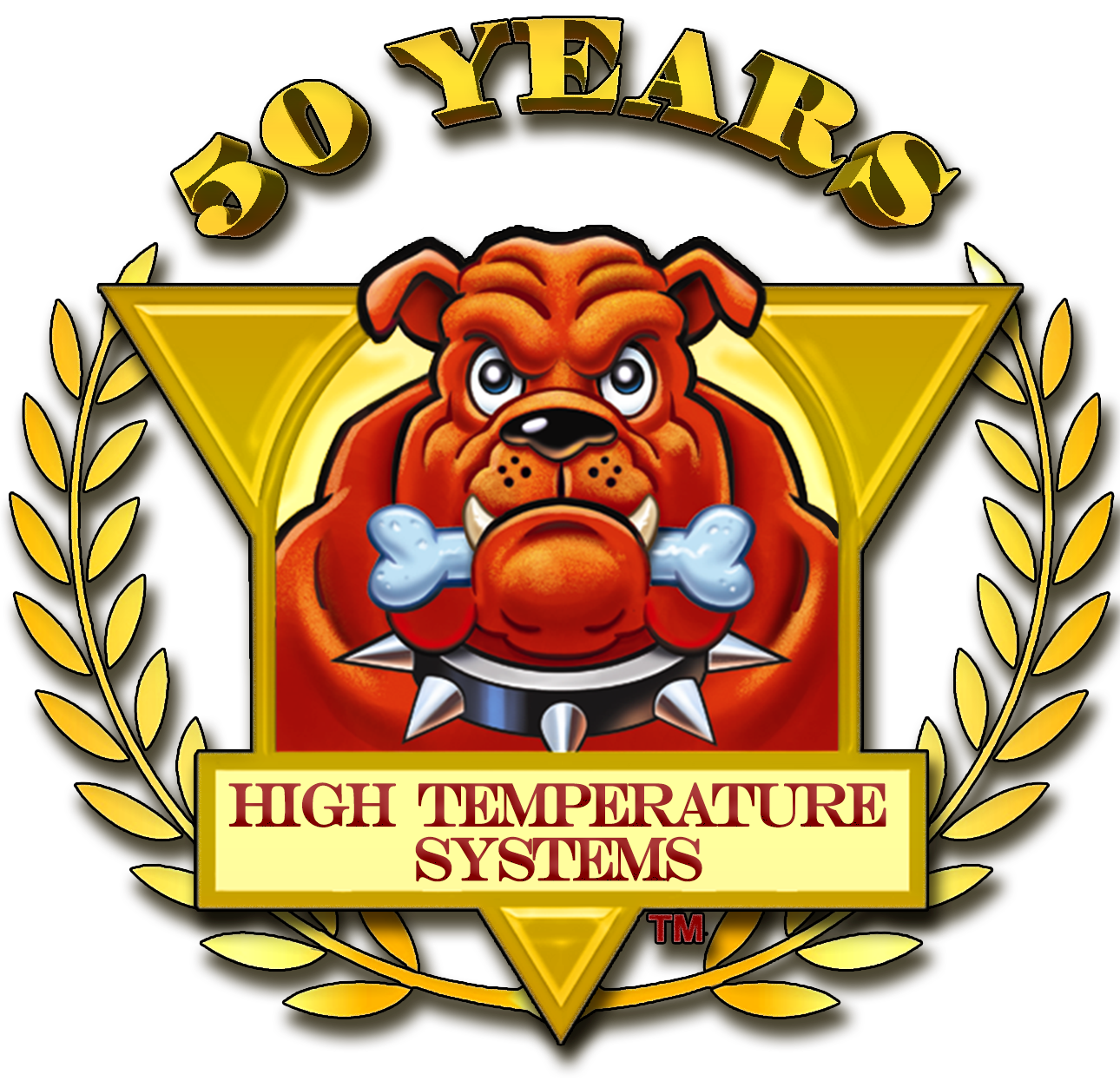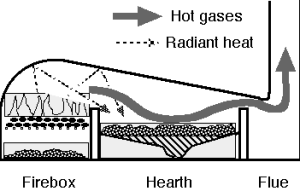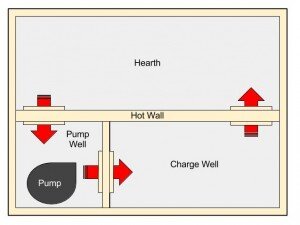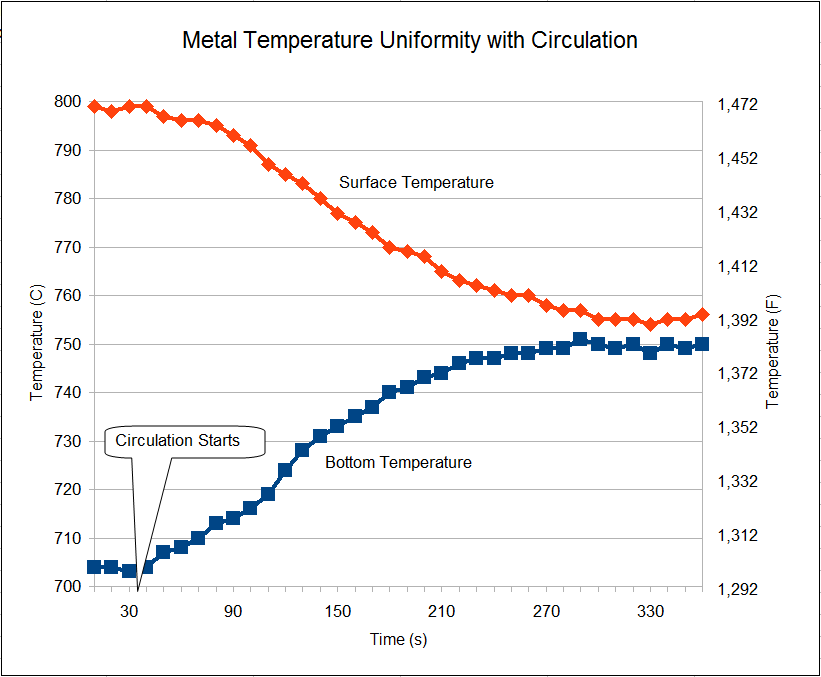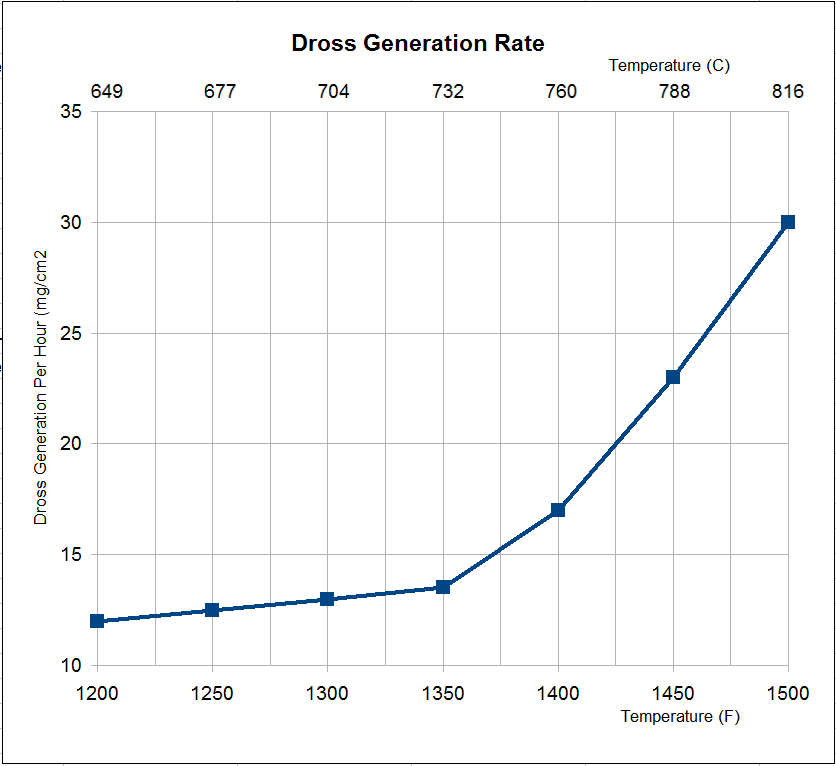Why Should I Use a Circulation Pump?
Early Reverb Furnace Designs
The reverberatory (reverb) furnace has been in use since medieval times. This diagram shows a primitive reverb furnace of an early design. The entire furnace could be constructed from natural refractory materials such as clay. This design has a range of limitations that has led to the modern reverb furnace.
For instance, the design limits access to the metal bath when charging the hearth or ladling molten metal - thus achieving uniform heating or a homogenous alloy requires manual stirring of the molten bath. As radiant heat is applied to the top of the hearth, metal underneath the first few centimeters is significantly cooler and can be left either solid or at a much lower temperature than the surface melt.
Typical Modern Reverb Design
Consider the simple reverb furnace configuration with a hearth, charge well, and pump well as shown here in an aerial view. Each of the three compartments is separated by a wall with a submerged archway. Built from steel, every compartment and wall is lined with refractory materials. The hearth is separated from the pump wall and charge well by a "hot wall" that guides the combustion gasses to the flue. The hot wall also prevents the area above the open pump well and charge well from becoming overheated by the hot combustion gasses. Large sows are typically introduced through the hearth door while smaller charges like ingots, scrap, alloying metals, and flux are introduced through the charge well without losing hearth gasses and heat.
The circulation pump is located in the pump well and drives molten metal into the charge well via a submerged archway. The pump acts to lower the melt level in the pump well and raise the level in the charge well. This elevated metal level within the charge well pushes molten metal through a submerged archway in the hot wall into the heath. Hydrostatic head pressure between the hearth and the pump well moves metal through a submerged archway into the pump well completing the cycle.
Melt Temperature Uniformity
To ensure a homogeneously alloyed metal bath, the entire aluminum bath must be held at a minimum temperature of about 700˚C (1300˚F). To achieve this temperature at the bottom of the bath (furthest from the heat source) without forced circulation, the top of the bath must be heated well over 700˚C (1300˚F).
This timeline shows the top and bottom bath temperature both with and without forced circulation. At the far left, the chart shows typical bath temperatures for a modern 40,000lb reverb furnace without forced circulation in operation. Circulation is initiated at 30 seconds and the bath temperature becomes nearly uniform within 300 seconds.
The most obvious benefit to forced circulation is energy savings. While energy costs fluctuate radically, energy savings is always a benefit to the melt department. With lower energy consumption, there is less stress placed on a range of furnace and facilities components. Most obvious is that flue temperatures can be lowered a few hundred degrees which reduced wear on the flue and scrubber components. Furthermore, the refractory liners will last longer at lower temperatures.
Dross Generation
Dross generation is a function of temperature and availability of reactive chemical agents. The chart above shows dross generation rate as a function of melt bath temperatures. There is an inflection point in the curve at about 730˚C (1350˚F) above which the dross generation rate increases significantly. One way to reduce dross generation is to keep the melt temperatures as low as possible without impairing the overall operating efficiency of the furnace. The typical melt temperature is often between 700˚C to 760˚C (~1350˚F to 1400˚F), with some facilities operating at even higher temperatures.
Forced circulation allows for lower melt temperatures and lower dross generation rates.
Circulation Rates
There is an ongoing debate between furnace builders and their customers regarding the nominal circulation rate for a reverb furnace and the impact of circulation on energy efficiency and melt rates. Circulation rate is typically described as turnover per hour, and nominal number ranges from 3 to 15 turnovers per hour. In the past, reverb furnaces were designed to accommodate a pump to support 3 to 6 turnovers per hour. End users of these furnaces have discovered through trial and error that higher melt rates and higher overall furnace efficiency can be had at higher turnovers such as 6 to 10. Some users have reported 30% higher melt rates with 9 or more turnovers per hour.
Summary of Benefit for Circulation
Circulating molten metal within a furnace has a range of benefits that include the following:
Improved Metal Quality - improves mixing and ensures homogeneity
Less Dross Production - by reducing peak heat by ensuring a uniform the melt temperature
Reduced Energy Costs - by reducing peak flue temperatures
Reduced Melt Loss - reduces oxidation by submersing the charge more quickly
Improved Furnace Refractory Life - by helping the flux to clean sidewalls and corners
Increased Production Throughput - reduces furnace cycle times
In most real world applications, any one of these benefits results in savings that more than offsets the cost of a circulation pump. As an example, a properly sized and operated circulation pump can increase overall furnace throughput 15% and in some cases 30% for a small fraction of the cost of a furnace expansion project.
